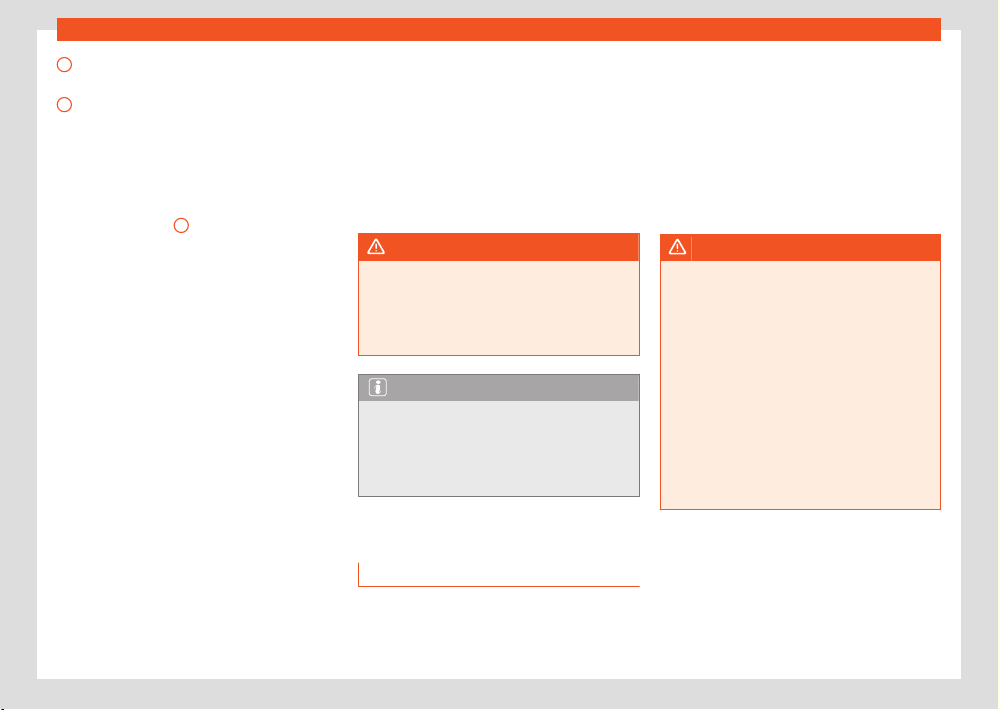Loading ...
Loading ...
Loading ...

Visibility
127
Mirrors
1
A
Rain sensor on; automatic wipe if neces-
sary.
Setting sensitivit
y level of rain sensor:
– Set control to the right: high sensitivity.
– Set control to the left: low sensitivity.
When the ignition is switched o and then back
on, the rain sensor stays on and starts operat-
ing again when the windscreen wipers are in
position ›››Fig.108
1
and the vehicle is travel-
ling at mor
e than 16km/h (10mph).
Abnormal operation of the rain and light
sensor
The possible causes of anomalies and errone-
ous interpretations in the sensitive surface area
›››Fig.109 of the rain sensor are, among oth-
ers:
●
Damaged wipers: a film of water on the
damaged blades may lengthen the activation
time, reduce the washing intervals or result in a
fast and continuous wipe.
●
Insects: the impact of insects may cause the
wiper to activate.
●
Salt on the road: in winter, salt spread on
the roads may cause an excessively long wipe
when the windscreen is almost dry.
●
Dirt: dry dust, wax, coating on glass (Lotus
eect) or traces of detergent (car wash) may
reduce the eectiveness of the rain sensor or
make it react more slowly, later or not at all.
Regularly clean the sensitive surface of the rain
sensor ›››Fig.109 (arrow) and check for possi-
ble damage to the wiper blades.
●
Windscreen crack: the impact of a stone will
trigger a single wipe cycle with the rain sensor
on. Next the rain sensor detects the reduction in
the sensitive surface area and adapts accord-
ingly. The behaviour of the sensor will vary with
the size of the damage caused by the stone.
WARNING
The rain sensor may not detect enough rain
t
o switch on the wipers.
●
If necessary, switch on the wipers man-
ually when water on the windscreen ob-
structs visibility.
Note
●
To remove wax and coatings, we recom-
mend a windo
w cleaner containing alcohol.
●
Do not put stickers on the windscreen in
front of the rain sensor. This may cause sen-
sor disruption or faults.
Mirrors
General safety instructions
The exterior and interior mirrors allow the driver
to observe vehicles driving behind and adapt
his or her driving behaviour accordingly.
For safe driving, it is important for the driver
to adjust the exterior mirrors and interior mirror
correctly before setting o.
When looking through the exterior mirrors and
the interior mirror, it is not possible to see the
entire area behind and to the sides of the vehi-
cle. These areas outside the field of view are
known as the blind spot. Other road users and
objects may be in the blind spot.
WARNING
Adjusting the exterior mirrors and interior
mirr
or while driving can distract the driver.
This could cause accidents and lead to seri-
ous injuries
●
Only adjust the exterior mirrors and interior
mirror when the vehicle is stationary.
●
When parking, changing lanes, overtaking
or turning, always keep a close eye on your
surroundings, as other road users or objects
may also be in the blind spot.
●
Always make sure that the mirrors are ad-
justed correctly and that visibility to the rear
is not reduced by ice, snow, fogging or other
objects.
Loading ...
Loading ...
Loading ...